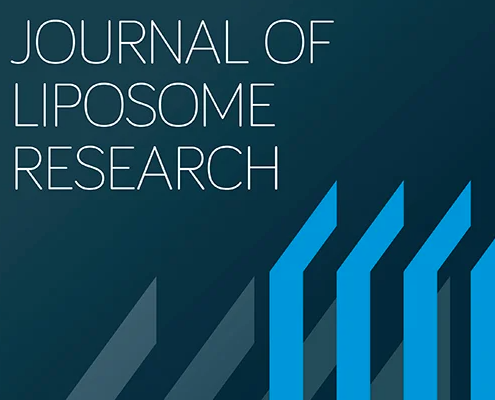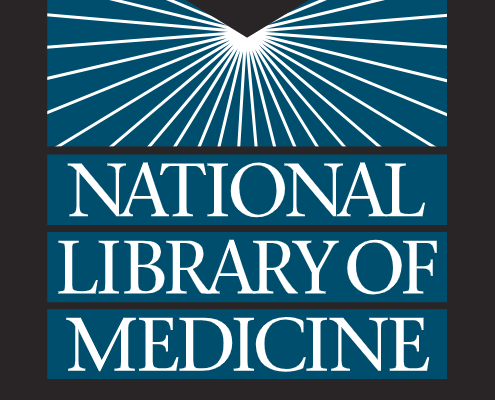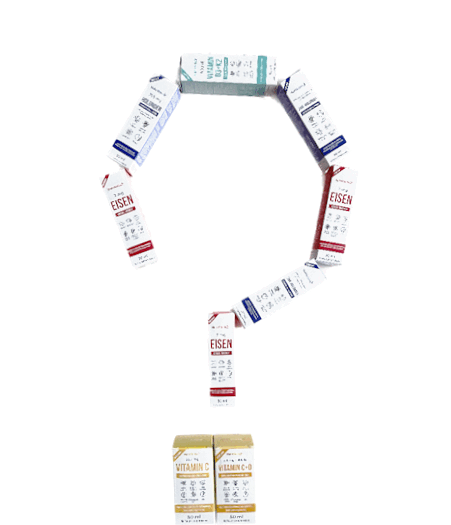In a world shaped by contemporary lifestyles, the role of vitamin C and D supplementation in fortifying immunity and combating viruses rises to prominence. As our understanding of their mechanisms deepens, these vitamins emerge as potent allies in the quest for robust health and disease prevention.
Vitamin C and D, among the earliest discovered vitamins, have garnered extensive research attention for their potential in bolstering immunity and combating viral infections. Their supplementation presents a cost-effective and streamlined intervention, boasting excellent safety profiles.
Vitamin C’s immune-modulatory and antimicrobial attributes render it indispensable in managing chronic and infectious diseases. Vitamin D profoundly shapes immune efficiency. Insufficiency heightens susceptibility to respiratory infections. Obtained from sunlight or supplements, its scarcity in COVID-19 patients links to escalated infection rates and mortality. Vitamin D supplementation curbs viral replication, susceptibility, and inflammation. While sunlight-induced skin synthesis and dietary sources sustain vitamin D levels, widescale deficiencies stem from sedentary lifestyles and inadequate diets. This is particularly prevalent in Europe, where over 40% of the population may lack sufficient levels.
Both vitamins function as immune system regulators, fortifying white blood cell activity and reducing autoimmune risk. Vitamin C’s antioxidant prowess combats oxidative stress, which is tied to chronic ailments. Additionally, its significance in iron homeostasis and enzymatic reactions is pivotal.
Amid modern challenges like pollution, stress-induced inflammation, and oxidative damage, optimizing vitamin intake holds pivotal importance. In NutriStella Vitamin C+D oral gel, we leverage liposomal technology and oral mucosa delivery to enhance absorption and augment the bioavailability and efficacy of vitamins C and D.
Vegan. Lactose-, gluten- and GMO-free. Tastes good. Tooth friendly formula (sugar-free). Long lasting. Higher bioavailability and absorption.
BODY/IMPORTANCE
Vitamin C plays a pivotal role in growth, repair, and disease defense. Its immunomodulatory function strengthens both innate and adaptive immunity, safeguarding tissue barriers and regulating cytokines. Notably, it aids in curbing cytokine storms, where an excessive release of cytokines can trigger widespread inflammation, tissue harm, and even organ failure. Such storms commonly occur in severe instances of viral infections, autoimmune disorders, and other medical conditions. Vitamin C supports the maturation of T lymphocytes, contributing to the reduction of cytokine-related responses.
Since humans cannot synthesize their own vitamin C it should be absorbed by mucosa and carried through the circulation to the various organs. The intricate system of ascorbic acid fluxes in the human body prevents excessive fluctuation of its concentrations inside cells as required by metabolic processes.
Approximately 70%–90% of vitamin C can be absorbed at moderate intakes of 30–180 mg/day. However, at doses above 1,000 mg/day, absorption falls to less than 50%. The supplementation exhibits low toxicity since kidneys remove any excess of vitamin C preventing overdose.
The vitamin C blood concentration, in addition to supply and elimination, also depends on redistribution. During times of low dietary intake, vitamin C is reabsorbed by the kidneys rather than excreted. This process prevents from deficiency during malnutrition periods.
The UK Government offers dietary intake recommendations ranging between 30 to 35 mg per day for children aged 1 to under 14 years. For older adolescents and adults, the intake recommendations have been set at the 40 mg level.
The term Vitamin D refers to a group of fat-soluble molecules responsible for calcium homeostasis and bone metabolism. Additionally, they play a crucial role in enhancing immunity and reducing the severity of numerous infectious diseases. The role of Vitamin D in supporting immunity and preventing cytokine storms is based on three mechanisms:
- Vitamin D promotes the maturation of lymphocytes and macrophages (lymphocytes being white blood cells involved in adaptive immunity, and macrophages being white blood cells involved in innate immunity).
- Vitamin D inhibits the expression of pro-inflammatory cytokines.
- Vitamin D increases the production of the antimicrobial peptide cathelicidin, which targets viruses.
In humans, the most important compounds in this group are vitamin D3 (sun- and animal-derived cholecalciferol) and vitamin D2 (plant-derived ergocalciferol).
Vitamin D3 is the preferred form of Vitamin D and most commonly found in nutritional supplements because it demonstrates better efficiency than Vitamin D2 at raising and maintaining Vitamin D levels in the body.
After Vitamin D is synthetized by the skin or acquired from food or supplements it circulates in the blood for about 24 hours. Then, native Vitamin D is stored in the fat tissue for approximately two months. Here it remains inactive until it’s needed. When the body needs more Vitamin D, Vitamin D-2 and Vitamin D-3 are converted by the liver and kidneys to their active form (called calcitriol) and then released into the blood. The released active Vitamin D can circulate in the body for approximately three weeks. After the body is replenished, the biologically active form is stored in fat tissue for months and is released from the storage depending on the body’s need.
The vitamin D status (internal exposure) is best measured by the serum concentration of 25-hydroxyvitamin D3 (25-OH-D3), as this reflects both the dietary intake and the endogenous synthesis. Levels of 50 nmol/L (20 ng/mL) or above are adequate for most people for bone and overall health. Levels below 30 nmol/L (12 ng/mL) are too low and might adversely affect health. Levels above 125 nmol/L (50 ng/mL) are too high and might also cause health problems.
With regular outdoor exposure from late March/early April to the end of September the majority of people should be able to make 80% to 90% needed Vitamin D from sunlight on their skin, while oral intake should make only a minor contribution (10% to 20%). Little to no vitamin D can be produced by the skin in the winter months due to the sun’s position. In all the places north of 37 degrees latitude (most of Europe, above Sicily and Sevilla) Vitamin D needs to be delivered in food and supplements.
A vitamin D supplement (10µg/day) is recommended by the UK public health institutions during the autumn and winter months to protect musculoskeletal health. Research suggests that low vitamin D levels could increase the risk of respiratory infections like flu and COVID-19 complications. Experts recommend following the government’s advice to take 10µg (400IU) of vitamin D daily to potentially lower this risk.
WHO IT’S FOR
Vitamin C deficiency
Risk factors
- a poor diet lacking in fresh fruits and vegetables inc. western diet
- illnesses such as anorexia and other mental health issues
- restrictive diets due to allergies, difficulty orally ingesting foods or other reasons
- older age
- type 1 diabetes who have high vitamin C requirements
- disorders of the GI (gastro-intestinal) tract like inflammatory bowel disease
- iron overload, which leads to the wasting of vitamin C by the kidneys
- excessive consumption of alcohol or use of certain substances
- cigarette smoking and exposure to secondhand smoke
- late or unsuccessful weaning of infants can also lead to scurvy
- polluted air
Deficiency symptoms
.Early signs:
- loss of appetite,
- weight loss,
- fatigue,
- irritability
- lethargy
Within 1-3 months, there may be signs of:
- anemia
- myalgia, or pain, including bone pain
- swelling, or edema
- petechiae, or small red spots resulting from bleeding under the skin
- corkscrew hairs
- gum disease and loss of teeth
- poor wound healing
- shortness of breath
- mood changes, and depression,
Overdosing
Even at high doses, vitamin C is not known to be toxic or to cause any serious adverse effects. The excess of Vitamin C is excreted in the urine.
Overdosing symptoms
The most common side effect of high vitamin C intake is digestive distress. The most common digestive symptoms of excessive vitamin C intake are diarrhea and nausea.
High vitamin C intake is not only associated with greater amounts of urinary oxalate but also linked to the development of kidney stones.
Due to its acidity conventional Vitamin C may be harmful for people prone to acid reflux.
Vitamin D deficiency
Risk factors
- Strict vegan diet. Most natural sources of Vitamin D are animal-based thus plant based diet requires usually supplementation.
- Limited exposure to sunlight due to: season, living in northern latitudes or having occupation, lifestyle or condition that prevents sun exposure, wearing long robes or head coverings for religious reasons, air pollution.
- Dark skin. The pigment melanin reduces the skin’s ability to make vitamin D in response to sunlight exposure. Some studies show that older adults and people with darker skin are at high risk of vitamin D deficiency.
- Impaired kidneys ability to convert Vitamin D to its active form. Apart of medical conditions this may happen as people age.
- Weak Vitamin D absorption due to digestive tract malfunctions i.e. Crohn’s disease, cystic fibrosis, and celiac disease that affect intestine’s ability to absorb vitamin D from the ingested food.
- Vitamin D is trapped by fat cells, altering its release into the circulation. People with a body mass index of 30 or greater often have low blood levels of vitamin D.
Vitamin D deficiency symptomes
In addition to blood test readings, symptoms of vitamin D deficiency include:
- frequent illness or infections
- bone fragility, osteoporosis, rickets in children,
- bone pain
- tiredness and fatigue
- depression, anxiety
- impaired wound healing
- muscle weakness, pain, or twitching
- stiff joints
- hair loss
- weight gain
Vitamin D overdosing
An excess of vitamin D causes abnormally high blood concentrations of calcium (hypercalcemia), which can cause overcalcification of the bones, soft tissues, heart and kidneys as well as hypertension. Symptoms of vitamin D toxicity appear several months after excessive doses of vitamin D are administered.
Vitamin D overdosing symptoms
- weight loss, nausea, weakness, vomiting, constipation, frequent urination and poor appetite
- insomnia, irritability, fatigue, mental confusion
- anomalies of heart rhythms
- bone and muscle pain and kidney problems, such as the formation of calcium stones
HOW TO USE
NutriStella Iron Liposomales Vitamin C+D
DIRECTIONS: Adults and children over 3 years of age: one spray per day under the tongue. Take on empty stomach, at least 15 min before eating. Before first use, press the pump 2-3 times until the contents appear. Shake before use. Rinse nozzle with water when congested.
DOSAGE: Contains 250 mg (313% NRV*) of vitamin C and and 800 IE (20 μg) of vitamin D3 (400 % NRV*) per daily dose (1 spray)
*% of EU Nutrient Reference Value
Please note
As vitamin C is water-soluble, traditional supplements are most effectively absorbed on an empty stomach—either 30 minutes before a meal or 2 hours after. However, there is controversy regarding whether vitamin C should be taken without food due to its irritation properties. Many vitamin C manufacturers advise compromising on absorption for the benefit of patient comfort. Notably, this is not a concern with NutriStella products.
Vitamin C can also be taken in supplemental form at any time during the day. While there isn’t enough evidence to specifically support taking vitamin C at night, individuals with low vitamin C levels often experience sleep quality deprivation. It appears safe to take vitamin C before the evening, as it may boost energy levels, potentially making it difficult to fall asleep.
Exercise caution when taking Vitamin C with other substances, such as medications, as its potent antioxidant properties may alter their effectiveness.
Vitamin C Absorption Enhancers
The only scientifically proven boosters of Vitamin C absorption are liposomes.
Vitamin C is prone to degradation in the gastrointestinal tract, particularly in the presence of metal ions. Encapsulated in liposomes—small, spherical lipid-based structures consisting of one or more bilayer phospholipids—Vitamin C retains its properties. Liposomes not only reduce vitamin C degradation, slow down its release, and enhance absorption, but also mitigate potential disturbances in gastrointestinal tract functioning. Research shows that liposomal formulas demonstrate 2x better absorption than conventional Vitamin C formulas.
Our liposomal spray formulations outperform ingested liposomal forms like tablets or capsules because they are rapidly absorbed via the oral mucosa, bypassing the traditional gastrointestinal route. Vitamin absorption through the oral mucosa is 3-5 times greater than the conventional route.
Vitamin C Absorption Inhibitors
Vitamin C is transported through the intestine via both glucose-sensitive and glucose-insensitive mechanisms. The presence of large quantities of sugar in the intestine can slow absorption from the gastrointestinal tract. Additionally, consuming sugar introduces more free radicals to the body that Vitamin C may sacrifice itself to neutralize, instead of neutralizing the free radicals in other areas of the organism. So, even if Vitamin C gets absorbed, it may not be put to optimal use.
The bioavailability of vitamin C is often reduced in conditions such as stress, alcohol intake, smoking, fever, viral illnesses, the use of antibiotics and painkillers, exposure to petroleum products or carbon monoxide, and heavy metals toxicity.
Vitamin D Absorption Enhancers
Because Vitamin D is a fat-soluble vitamin, it’s best absorbed in the bloodstream in the presence of dietary fat. It also helps to eat Vitamin D-rich food from animals and take supplements that contain Vitamin D3. Combining vitamin D with magnesium may also help to increase absorption.
Vitamin D Absorption Inhibitors
Vitamin E and K impose competitions for vitamin D absorption in intestine. Recently a research demonstrated that high concentration of vitamin A reduces bioavailability of vitamin D by 30%. Functional ingredients that reduce cholesterol levels i.e. phytosterols, plant sterols may also impair Vitamin D absorption.
INGREDIENTS
INGREDIENTS: Purified water, Vitamin C (L-ascorbic acid), sunflower lecithin (emulsifier), sodium bicarbonate (acidity regulator), glycerol (humectant), xanthan gum (thickener), natural lemon flavouring, potassium sorbate (preservative), steviol glycosides (sweetener), cholecalciferol (vitamin D3), α-tocopheryl acetate (antioxidant).
Suitable for vegans. Does not contain artificial flavourings, colors, oils, salt, yeast. Lactose, gluten and GMO free.
Tooth friendly formula (sugar-free)
Long lasting
NutriStella Liposomal Vitamin C+D has an almost neutral pH and is therefore mild for mucosa and the digestive system. Not buffered with calcium, it is a wise choice for individuals with cardiovascular issues or those already supplementing with calcium.
Vitamin C, being the most volatile vitamin, is easily degraded by temperature, humidity, and oxygen during storage. The combination of liposomes and the air-free bottle effectively protects NutriStella Vitamin C from deterioration.
WHY NUTRISTELLA PRODUCT
SUPPORTS IMMUNE DEFENCE – Vitamins C and D play a crucial role in bolstering the immune system, particularly during autumn and winter. This dynamic vitamin duo not only promotes bone health and collagen production but also serves as potent antioxidants, effectively combating free radical damage. This comprehensive support positively impacts the condition of the skin, bones, and overall immune system.
EXCELLENT ABSORPTION – Our liposomal vitamins C and D, presented in an oral gel form, boast exceptional bioavailability. Research indicates that liposomal vitamin C has double the bioavailability of conventional vitamin C. The unique liposomal structure shields the active ingredients from degradation, facilitating swift penetration into the bloodstream. Oral mucosa absorption further ensures a faster and more efficient intake.
STOMACH-FRIENDLY – The liposomal structure utilized in this product not only enhances absorption and utilization of the active ingredients but also safeguards the stomach and digestive system, mitigating the unpleasant side effects often associated with vitamin C intake.
CONVENIENT AND WITHOUT UNWANTED ADDITIVES – Easy to use with no swallowing required, our NutriStella brand nutritional supplement is user-friendly, travel-safe, and free from lactose, gluten, sugar, GMO, and soy. It contains no artificial flavors, colors, salt, or yeast, making it suitable for vegans and vegetarians. Crafted without solvents or alcohol, the natural lemon flavor ensures a delightful taste experience.














